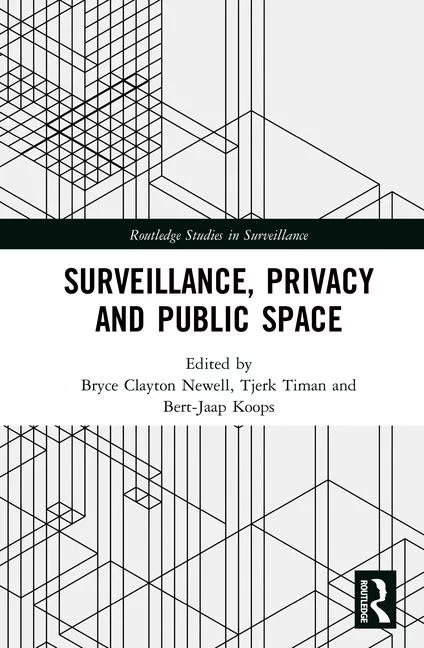Revolutionizing public safety and criminal justice through AI

Image via Unsplash
Artificial Intelligence (AI) is rapidly transforming public safety, criminal justice and security by fundamentally changing how crimes are committed, investigated and prevented. As AI tools become increasingly sophisticated, law enforcement and corporate security professionals are utilizing these advancements to enhance their capabilities. However, integrating AI into these sectors also brings significant challenges, including ethical concerns, recruitment difficulties, and the surge in crime rates. This article examines the transformative impact of AI, the ongoing efforts to unify AI applications across public safety and security sectors, and expert advice on overcoming the associated challenges.
The evolving landscape of crime and security with AI
AI’s influence on public safety and security is multifaceted, impacting both the nature of criminal activities and the methods used to combat them. Criminals are increasingly leveraging AI to execute more sophisticated cyberattacks, evade detection, and exploit vulnerabilities in security systems. For instance, AI-powered malware can adapt to different environments, making it more challenging for traditional security measures to detect and neutralize threats. Additionally, deepfake technology, which uses AI to create highly convincing fake audio and video content, has been exploited for identity theft, financial fraud, and misinformation campaigns.
Conversely, AI equips law enforcement and security professionals with powerful tools to counter these evolving threats. Predictive analytics, powered by machine learning algorithms, allows for the analysis of vast amounts of data to identify patterns and predict criminal behavior. This proactive approach enables law enforcement agencies to allocate resources more effectively and prevent crimes before they occur. For example, AI-driven crime mapping tools analyze historical crime data to forecast high-risk areas, helping police departments deploy officers more strategically.
In criminal investigations, AI is revolutionizing the way evidence is gathered, analyzed and interpreted. Advanced facial recognition technology, natural language processing, and AI-driven data mining have become essential tools in identifying suspects, uncovering connections between criminal networks, and solving complex cases. AI-powered surveillance systems can automatically flag suspicious behavior in real-time, reducing the burden on human operators and enhancing the accuracy of monitoring efforts.
Integrating AI across public safety and security sectors
As AI continues to advance, there is growing recognition of the need to integrate AI applications across public safety and security sectors. A unified approach can enhance collaboration between law enforcement, corporate security, and other stakeholders, leading to more effective crime prevention and response strategies. However, achieving this integration requires addressing several challenges, including ethical use of AI, recruitment and hiring issues, and the need for standardized practices.
One key effort to integrate AI across these sectors is the development of shared platforms and data exchange protocols. These initiatives aim to break down silos between different agencies and organizations, allowing for seamless information sharing and coordinated responses to emerging threats. For example, the Global AI Ethics Consortium (GAIEC) is working to establish guidelines for the ethical use of AI in public safety and security, emphasizing transparency, accountability, and fairness in AI-driven decision-making processes.
Another important aspect of integration is the collaboration between public and private sectors. Corporate security professionals are increasingly partnering with law enforcement agencies to share insights, best practices and technological innovations. These partnerships are particularly valuable in addressing cybersecurity threats, where the private sector often possesses innovative expertise and resources. By working together, public and private entities can create a more comprehensive and resilient security ecosystem.
To successfully integrate AI into law enforcement and security organizations, it is crucial to tackle the recruitment and hiring challenges these sectors face. The demand for skilled professionals capable of leveraging AI-driven tools is rapidly outpacing the available talent, resulting in a significant gap. To address this, many agencies are not only investing in comprehensive training programs to upskill their current workforce but are also revising their recruitment strategies to attract tech-savvy candidates. A prime example of this effort is Embry-Riddle Aeronautical University’s College of Business, Security, and Intelligence in Prescott, Arizona. The college offers hands-on courses that utilize advanced tools complemented by immersive internships that allow students to apply and refine their skills in real-world settings. As a result, graduates are highly sought after, receiving multiple offers from both public and private sector organizations.
Addressing rising crime rates and workplace violence
The increase in crime rates and workplace violence has underscored the urgency of integrating AI into public safety and security efforts. AI offers innovative solutions to these pressing issues but also raises ethical concerns that must be addressed to ensure responsible use.
In the context of rising crime rates, AI can play a crucial role in enhancing law enforcement's ability to respond to and prevent criminal activities. Predictive policing, as mentioned earlier, allows agencies to anticipate crime hotspots and deploy resources accordingly. Moreover, AI-driven forensic analysis can expedite the investigation process, enabling faster identification of suspects and resolution of cases. However, critics argue that predictive policing may perpetuate biases present in historical crime data, leading to discriminatory practices and unequal treatment of communities. To mitigate these risks, it is essential to implement robust oversight mechanisms and ensure that AI systems are transparent and accountable.
Workplace violence is another area where AI is making a significant impact. AI-powered monitoring systems can detect early warning signs of violent behavior, such as verbal threats or aggressive body language, allowing for timely intervention. Additionally, AI-driven risk assessment tools can evaluate the likelihood of workplace violence based on various factors, helping employers implement preventive measures. However, the use of AI in monitoring employees raises privacy concerns, as constant surveillance may infringe on individuals' rights and create a culture of mistrust. Balancing the need for safety with respect for privacy is a critical challenge that organizations must navigate when implementing AI-driven solutions.
Expert recommendations for the responsible use of AI
To address the challenges associated with the integration of AI in public safety, criminal justice and security, experts from these fields advocate several key measures. These recommendations focus on ensuring the ethical use of AI, improving recruitment and hiring practices, and fostering collaboration across sectors.
Primarily, experts emphasize the importance of establishing clear ethical guidelines for AI deployment. These guidelines should be developed in consultation with a diverse range of stakeholders, including law enforcement, security professionals, legal experts, and community representatives. The goal is to create a framework that prioritizes transparency, accountability and fairness while minimizing the potential for bias and discrimination. Additionally, ongoing monitoring and evaluation of AI systems are crucial to identify and address any unintended consequences.
Regarding recruitment and hiring, experts suggest that agencies should prioritize diversity and inclusion in their hiring practices. A diverse workforce is more likely to bring a variety of perspectives to the table, reducing the risk of bias in AI-driven decision-making. Furthermore, investing in continuous training and professional development for existing employees is essential to keep pace with the rapidly evolving AI landscape. By building a workforce that is both technically proficient and ethically aware, organizations can better navigate the challenges associated with AI integration.
Ultimately, experts advocate for stronger collaboration between public safety, criminal justice and corporate security sectors. This collaboration should extend beyond traditional partnerships to include academic institutions, technology companies and civil society organizations. By fostering a multidisciplinary approach, stakeholders can leverage their collective expertise to develop more effective and equitable AI-driven solutions. Moreover, cross-sector collaboration can help establish standardized practices and protocols, ensuring that AI is used consistently and responsibly across different domains.
The transformative impact of AI on public safety, criminal justice and security is undeniable, offering new tools and capabilities to combat crime and enhance security. However, the integration of AI across these sectors presents significant challenges, including ethical considerations, recruitment issues, and the need for unified approaches. By adhering to expert recommendations, such as the development of ethical guidelines, improving hiring practices, and fostering collaboration, stakeholders can harness the potential of AI while addressing its associated risks. As AI continues to evolve, its role in shaping the future of public safety and security will undoubtedly become even more critical.
Looking for a reprint of this article?
From high-res PDFs to custom plaques, order your copy today!








